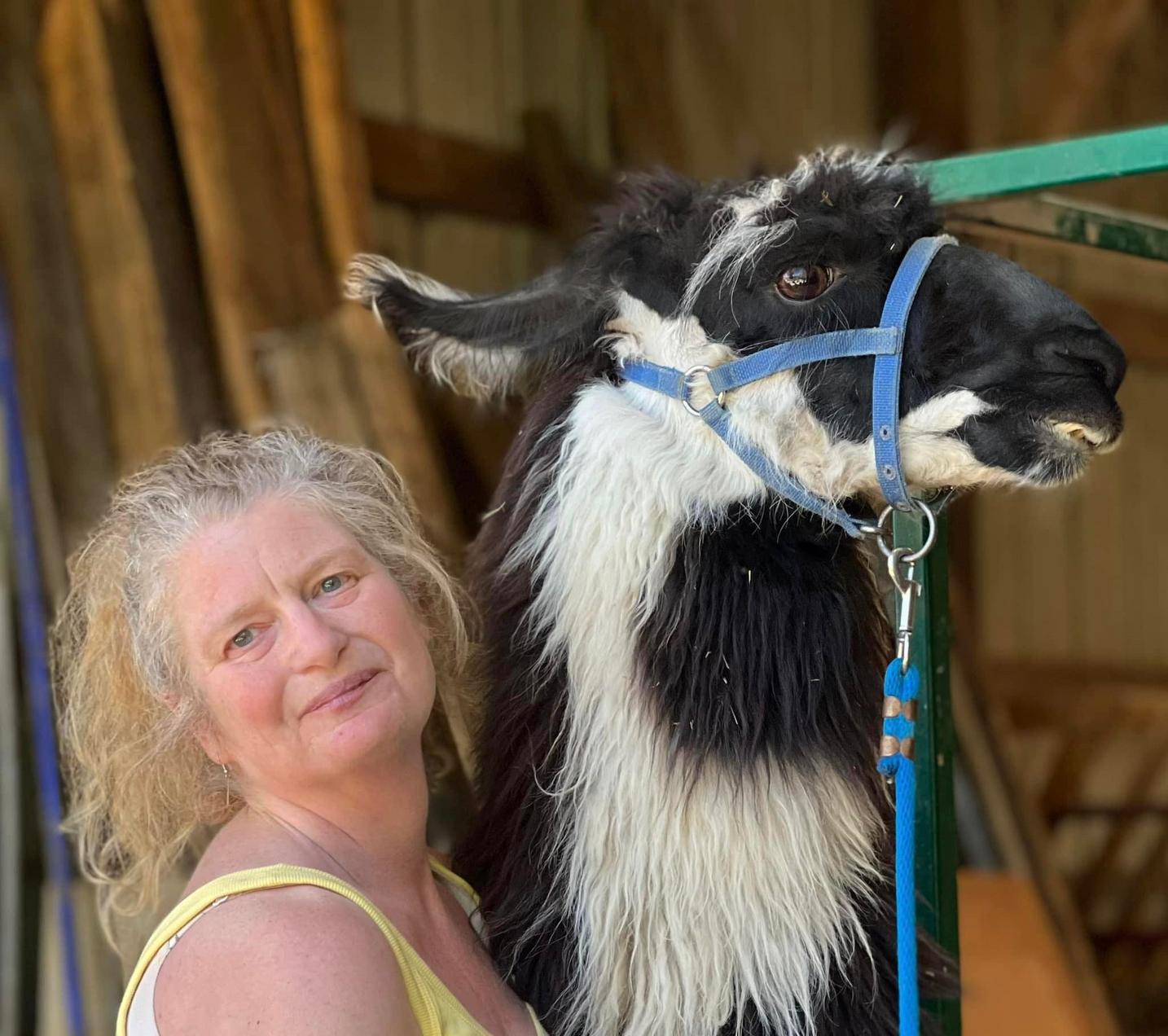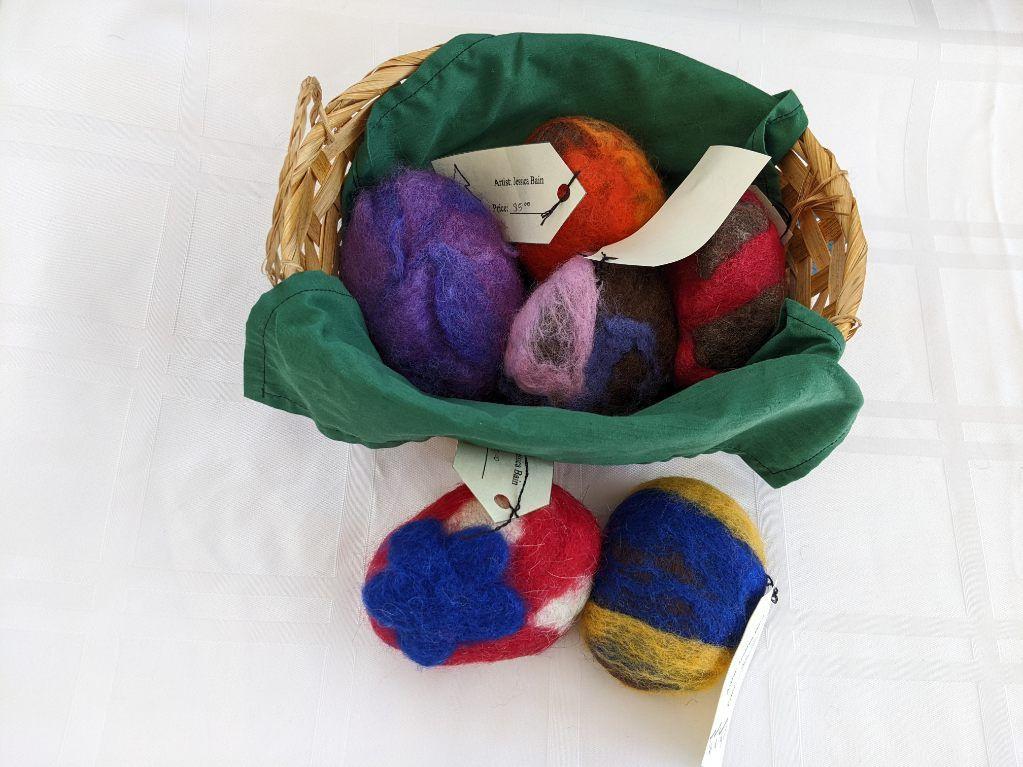












I wanted to take a minute and introduce myself. Since this is new for all of us. My name is Amy Bowling and I am one of the owners of Forget Me Knot Farm & Fibers. We breed and raise llamas for show and fiber. We have been in this business for 10 years and learn something new everyday.
I am excited about the opportunity to connect with you through this newsletter and encourage your ideas and contributions. There will be an events section, a camelid care section, and a fiber/fleece section. I welcome articles and personal stories to include.

I will be having photo contests for the cover photo each quarter. The winning photo will be based on the number of likes in the Facebook group Friends of the Michigan Llama Association. The person that submits the photo receives a free half page ad in the newsletter.
I encourage comments, suggestions, and constructive critique as this is my first one and I aim to improve from here. Aobowling@att.net
President
Dave Thompson
Vice President
Tim Smith
Secretary
Corky Dubois Treasurer
Carmen Hartwig
231-357-6999
Board Member
Bob Minto
231-388-0421
Board Member
Lloyd Lash
517-467-2709
Board Member
Becci Kunkel
Board Member
Amy Bowling
231-527-5303
Past Member
Bob Douglas
Youth Representative
Katie Hodgen
Committee Chairpersons
Membership
Carmen Hartwig
231-357-6999
Youth Committee
Jennie Hodgen
765-720-7070
Lamafest
Carmen Hartwig
231-357-6999
Spring Fund Raiser
Annette Aldrich
517-675-7705
MLA Scholarship
Mid-Michigan Llama Show
vacant - Volunteer needed
Hobo Hootenanny Llama Show
Bob Minto
231-388-0421
Marketing
Renee' Hobbins, Julia Tarsa, Sarah Wolf
231-228-6128
WebMaster
Carmen Hartwig
231-357-6999
Wool Committee
Nel Vickers
231-675-7893



As llama owners and breeders, one of the selling points and profitable uses of our llamas is their fiber, but how many of us actually use their fiber? Llama fiber has many beneficial qualities:
An all-natural fiber that is eco-friendly and biodegradable

Light weight but more insulating than sheep’s wool
Fire resistant
Durable
Moisture wicking
Multiple natural colors
Variety of fineness
As an amateur fiber artist, I have enjoyed using my llama fiber in many ways. I started off by learning to spin the fiber about 15 years ago. I sat down next to some ladies who were spinning at a llama show while waiting between classes. One of them handed me a drop spindle and said “let me show you.” consequently hooked on spinning and making f items with my llamas’ fiber.

You don’t have to learn to spin to make things from llama fiber. Weaving, knitting, crocheting and felting can all be used to incorporate llama fiber in functional items. One of the simplest items that I have made are felted soaps. I actually learned how to make them when I was in 4-H. Felted soaps are made by wrapping llama fiber (typically in batts or roving) around a bar of soap. Then, you soak the fiber with water and rub the fiber around the bar of soap until it felts into a solid piece. Now you have a felted washcloth around the bar of soap. What a great item for camping, sporting events, picnics and other outdoor activities!

Llama fiber is versatile in the variety of types of fiber. Some llamas produce fiber that rivals alpaca for fineness and can be worn next to skin. Suri Llama and alpaca fiber is very drapey because it generally doesn’t have crimp. This can result in very luxurious fabrics for scarves, shawls, and cowls.
It can be challenging to use for items that require elasticity or memory, such as hats, sweaters, and socks. However, llama fiber will blend easily with more elastic fibers, such as wool, and can result in wonderfully warm garments.
I have knitted and crocheted multiple next to skin items using 100% llama and llama/wool blends.
I gifted this item to a friend who later told me that she wore it for 8 hours straight: “It hasn’t budged, slipped, moved. It’s not itchy. It’s not too hot [inside my vehicle], keeps me warm outside. I just may never take it off.”
Pictured is a crocheted headband that is made from handspun yarn that is 70% llama and 30% Finn sheep.

When crocheting or knitting items from llama fiber that need to retain their shape, use a slightly smaller hook or needles than what the gauge requires or use a tighter tension.
Although, make sure not to go too small or tight in your stitches or it can cause the fabric to become stiff because llama fiber doesn’t naturally have a lot of elasticity. Doing a swatch can be very helpful in practicing with your llama yarn.
When constructing an item, such as a hat, that needs elasticity, use a pattern that includes a lot of ribbing as these stitches themselves are elastic and can offset the lack of elasticity in llama yarn.
I knitted a pair of fingerless mitts from handspun llama fiber yarn. I used one needle size smaller than was called for by the pattern and added a couple extra rows of ribbing on the cuffs.

There are some tricks for using llama fiber yarn to create items that require elasticity or memory.
Multiple art modalities can also create useful llama fiber products. This pair of slippers is made from an 80/20 blend of llama fiber and merino wool. First the slippers were crocheted. Then, I put the slippers in the washer with two pairs of jeans and detergent. I ran the washer on a hot wash cycle then a cold rinse cycle. I checked the slippers a few times during the wash cycle and made sure that they were felted adequately before moving on to the rinse cycle. Once fully rinsed, I stuffed the slippers with plastic bags to shape and stretch the slippers to the desired size, and left them to dry overnight

Some llama fiber is too coarse to use next to skin. This may be because the individual llama produces cou fiber, or it may be fiber that is seconds or thirds (the fin fiber or prime is from the barrel while seconds and third from the shoulders/hips and legs/neck/belly). There is still a use for this fiber too! Courser fiber is generally more durable or sturdy than fiber. So, this fiber is great for rugs, bags and purses tapestries, placemats and more.
One of my favorite projects is to make purses from my llamas’ sturdier fiber. This purse is crocheted from 100% llama fiber. Sometimes, I wet felt the crocheted purse, like the above slippers, to create a stiffer fabric. Due to the diamond pattern on this purse, I decided not to felt this one. Using fabric remnants from a local seamstress, a lining is created within the crocheted purse and sewn into place with a zipper. I use D-rings and crab-claw clips to attach a shoulder chain. I have also used old belts sewn into the lining of the purse to create a strap. These purses are incredibly strong and durable. I still use the first llama purse that I made this way, and I made that purse 15 years ago. While the leather fabric and belt strap have needed to be repaired and replaced, the llama fiber purse has stood the test of time.


Llama fiber has so many sellable qualities beyond looking great on the animal. Let’s start using and marketing this amazing fiber that our llamas produce for us!


It is summer! With the summer heat and humidity here, it is increasingly important to consider how that affects the health of your animals. Llamas and alpacas can adapt to a wide variety of environmental conditions and can still struggle when the heat index is high. Heat stress occurs when the core body temperature rises above the normal temperature and the body is unable to regulate it, typically because of high temperature and/or humidity exposure. Heat stress is an emergency, and it is important to bring the temperature down quickly to prevent any permanent organ damage or death. Normal temperature of an adult llama is around 99 to 101.5 degrees Fahrenheit.
Temperatures up to 106 degrees Fahrenheit have been observed.
What can owners do to help prevent heat stress? There are several ways to help minimize the risk and keep your animals happy and healthy.
1. Shear your animals! Removing their fiber will help them stay cool and reduce the amount of heat kept in by the animal. The llama to the right is sporting a full body cut.

2. Shade is critical for the prevention of heat stress. An animal should have access to trees, shelter, or anything that can shield them from the sun.
3. Ventilation and fans help create a breeze and airflow that will help keep animals cool.
4. Access to water is essential for a llama or alpaca to stay cool and happy. Cold water that is clean and accessible will help the animal stay hydrated. Some people will put electrolytes in the water to encourage drinking. Many owners also fill kiddie pools or use splash pads for those animals that enjoy standing/kushing in it. We will also hose down our animals’ legs or bellies, most of our alpacas love it! Do not hose down parts where they have full fleece, as that moisture will stay and make the animal warm.
...Continued
5. Proper Nutrition and feeding habits: animals that are overweight are at a heightened risk for developing heat stress and eating can cause an increase in fermentation and heat that the animal generates. Older and sick animals can also have a harder time tolerating heat compared to their healthy and younger companions.
6. Crias: Crias are unable to regulate their body temperatures the same way that adults are, so pay special attention to them as they try and sunbathe with their parents, including more frequent temperature checks and moving them indoors if it is too hot.
7. Reduce transport or travel during hot weather or moving an animal to a new home during the hot seasons.
8. Most importantly, know your animals and trust your instincts. If something seems off, check it out and call a trusted vet or mentor.
Dirt piles are great for cooling off during hot days.

If you notice your animal acting off or are concerned, they may be suffering from heat stress, look for the following signs: (Note: every animal is different and pay attention to ANY abnormal behavior)

1. High body temperature (over 102 degrees Fahrenheit in adults, or above 102.5 in crias)
2. Open mouth breathing
3. Nasal flaring
4. Drooling or foaming
5. Depressive or dull behavior reluctance or inability to move
6. Weakness or trembling.
7. High heart and respiratory
Cebra, C., Anderson, D. E., A Tibary, Van, R. J., & Larue Willard Johnson. (2014). Llama and Alpaca Care : Medicine, Surgery, Reproduction, Nutrition, and Herd Health. Elsevier Health Sciences.
Fowler, M. E. (1994). Hyperthermia in Llamas and Alpacas. Veterinary Clinics of North America: Food Animal Practice, 10(2), 309–317.
https://doi.org/10.1016/s0749-0720(15)30564-8
JOHNSON.LARUE. (2019). Diseases of Llamas and Alpacas. Veterinary Manual; MSD Veterinary Manual. https://www.merckvetmanual.com/exotic-andlaboratory-animals/llamas-and-alpacas/diseases-ofllamas-and-alpacas
Prokop, I. (n.d.). Academy | Heat Stress in Alpacas. Www.alpacainfo.com. Retrieved June 27, 2023, from https://www.alpacainfo.com/academy/article/3326/h eat-stress-in-alpacas




